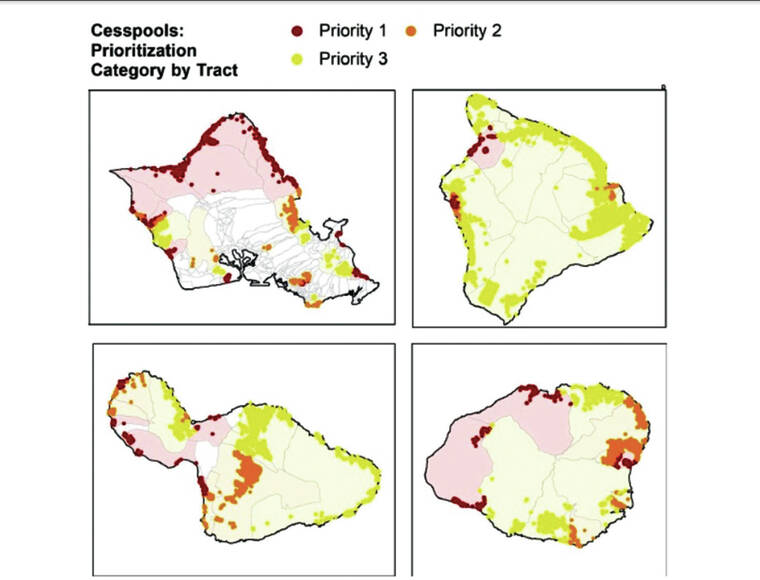LIHU‘E — The state Department of Health has announced an anticipated $5 million pilot grant program offering up to $20,000 for qualifying households that upgrade or convert their cesspools, or connect to an available sewage system.
Under state law, all of Hawai‘i’s approximately 88,000 cesspools must be upgraded or replaced by 2050.
However, according to the department’s Cesspool Conversion Working Group, high upfront costs are the single largest obstacle to cesspool conversions in Hawai‘i across all income levels.
Because of this, the department plans to ease the financial burden for low- and middle-income households through the pilot reimbursement program.
“This is truly an exciting program that will go a long way to help qualified applicants and, in turn, provide a healthier environment for future generations,” said Kathleen Ho, state Department of Health deputy director for Environmental Health. “I strongly recommend eligible households apply.”
Cesspools — or more specifically, what’s in them — can cause significant health hazards to nearby residents, particularly during large bouts of rainfall.
When rainwater percolates into the ground, it often picks up some of its surroundings before mixing with larger bodies of water. If the water’s surroundings are cesspools — of which Kaua‘i has approximately 14,000 — it can pick up large amounts of chemicals and fecal bacteria, pushing them into the island’s streams, rivers and beaches.
In their most recent assessment, Surfrider Kaua‘i’s Blue Water Task Force found more than 10 of the island’s popular waters contained potentially dangerous amounts of enterococci bacteria, a federally recognized indicator of fecal presence. In three sites — Nawiliwili Stream, Moloa‘a Stream and Hanalei River — enterococci presence was found to be more than 33 times above state water quality standards.
Carl Berg, Surfrider Hawai‘i Kaua‘i Chapter senior scientist, has long emphasized how critical cesspool management is to protecting the island’s water quality.
“It’s something that has to be done,” Berg said. “I think public awareness is out there now that we can’t keep polluting our water on a little island like that — we only have a little bit of water.”
Above contamination of rivers and beaches, though, Berg’s greater concern is the potential for these cesspool-originating bacteria to enter Kaua‘i’s aquifers, threatening the entire island’s supply of potable water.
“This is the only source of drinking water we have, and it’s really expensive to clean it up,” Berg said. “So, we’ve got to be careful as we go forward.”
How to apply for reimbursement
In order to qualify for reimbursement, applicants must first meet criteria set by the Department of Health:
• The applicant must be either a real property owner or a state Department of Hawaiian Home Lands lessee;
• Their cesspool must be located in an area identified as either priority level 1 or 2, according to the University of Hawai‘i’s 2021 Hawai‘i Cesspool Prioritization Tool;
• The applicant must prove their household income is no greater than 140 percent of their respective area median income via their most recent tax returns;
• The applicant’s upgraded or converted wastewater system must have an approval-to-use date or have been connected to a sewage system by July 1, 2022, at the earliest. Any earlier conversions are not eligible for reimbursement under the program.
If the department confirms an applicant’s eligibility, the applicant will have to submit a licensed engineer’s design plans, final construction inspection report, a copy of an approval to use letter issued by the director of health, and receipts of payment made to the licensed engineer and contractor before receiving reimbursement.
Applications for the grant program will be available at www.health.hawaii.gov/wastewater/home/ccpgp beginning March 15. Available grants are currently capped at 225, and will be awarded on a first-come-first-serve basis, subject to funding availability.
•••
Jackson Healy, reporter, can be reached at 808-647-4966 or jhealy@thegardenisland.com.




